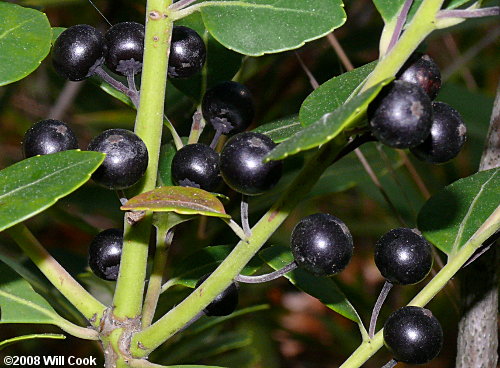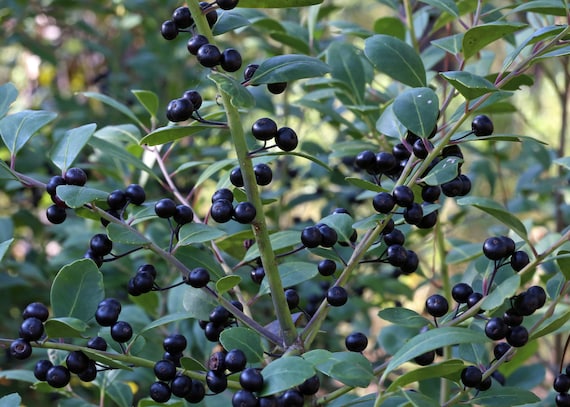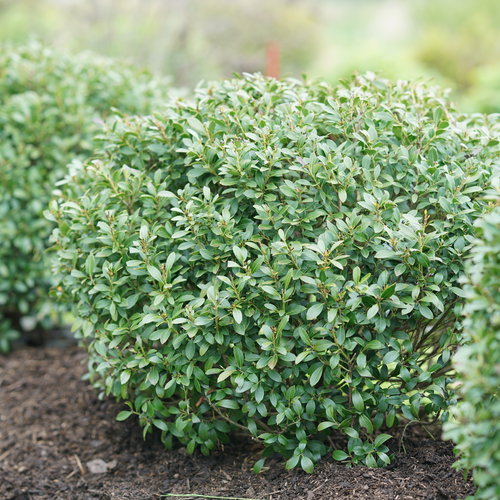Inkberry: The Evergreen Shrub That's Easy To Grow And Care For
Title: Inkberry: The Evergreen Shrub That's Easy to Grow and Care For
Introduction:
Inkberry (Ilex glabra) is a versatile and easy-to-grow evergreen shrub that is native to North America. It is a popular choice for landscaping because it is tolerant of a wide range of conditions, including full sun to part shade, moist to dry soil, and even coastal conditions. Inkberry is also deer-resistant and provides food and shelter for wildlife.
In this blog post, we will discuss the benefits of growing inkberry, as well as how to plant, care for, and propagate this beautiful shrub.
Benefits of Growing Inkberry
- Easy to grow and care for: Inkberry is a low-maintenance shrub that is tolerant of a wide range of conditions. This makes it a great choice for busy gardeners or those who live in areas with challenging growing conditions.
- Versatile: Inkberry can be used in a variety of landscape settings, including borders, hedges, foundation plantings, and containers. It is also a good choice for wildlife gardens, as it provides food and shelter for birds and other animals.
- Decorative: Inkberry has attractive, glossy green leaves that remain evergreen year-round. In the fall, it produces clusters of small, white flowers that are followed by bright red berries.
- Long-lived: With proper care, inkberry can live for 40 years or more. This makes it a wise investment for the long-term gardener.
How to Plant Inkberry
- Choose a planting site: Inkberry can be planted in full sun to part shade. It prefers moist, well-drained soil, but it can tolerate some drought.
- Prepare the soil: Before planting, amend the soil with compost or other organic matter. This will help to improve drainage and provide nutrients for the shrub.
- Plant the shrub: Dig a hole that is slightly larger than the root ball of the shrub. Place the shrub in the hole and backfill with soil. Water the shrub thoroughly.
How to Care for Inkberry
- Watering: Inkberry needs regular watering, especially during the first year after planting. Once the shrub is established, it can tolerate some drought.
- Fertilizing: Inkberry does not need to be fertilized often. A light application of fertilizer in the spring will help to promote new growth.
- Pruning: Inkberry can be pruned to maintain its shape or to remove dead or damaged branches. Pruning should be done in the spring or fall.
Propagating Inkberry
Inkberry can be propagated by rooting cuttings. To take a cutting, select a healthy branch that is about 6 inches long. Cut the branch just below a node. Remove the leaves from the bottom half of the cutting. Dip the cutting in rooting hormone and plant it in a pot of moist potting mix. Place the pot in a warm, shady location. The cutting should root in about 6 weeks.
Conclusion
Inkberry is a beautiful and versatile evergreen shrub that is easy to grow and care for. It is a great choice for a variety of landscape settings, and it provides food and shelter for wildlife. If you are looking for a low-maintenance shrub that will add beauty and interest to your landscape, inkberry is a great option.
Inkberry is a native evergreen shrub that is easy to care for and provides year-round interest. It is a good choice for borders, foundation plantings, and mass plantings. Inkberry can also be used as a groundcover or hedge.
If you are interested in learning more about inkberry, I recommend visiting Home Gardening. This website has a wealth of information about inkberry, including its care, cultivation, and uses.
FAQ of inkberry
- What is inkberry?
Inkberry is a type of evergreen shrub that is native to the eastern United States. It is known for its glossy, dark green leaves and its clusters of black berries. Inkberry is a versatile plant that can be used in a variety of landscape settings, including borders, hedges, and groundcovers.
- How much spacing does inkberry need?
Inkberry plants should be spaced two to three feet apart for a formal appearance and minimal pruning. If you are planting inkberry for a more natural look, you can space the plants closer together.
- What is the lifespan of inkberry?
With the right conditions and proper care, inkberry can live for 40 years or more.
- What are the benefits of planting inkberry?
Inkberry has many benefits, including:
* It is a low-maintenance plant that is drought-tolerant and deer-resistant.
* It provides year-round interest with its glossy leaves and black berries.
* It can be used in a variety of landscape settings.
- What are the challenges of planting inkberry?
Inkberry can be susceptible to a few pests and diseases, including scale, spider mites, and powdery mildew. However, these problems can usually be controlled with proper care.
- How do I care for inkberry?
Inkberry is a relatively easy plant to care for. It requires full sun to partial shade and well-drained soil. Inkberry should be watered regularly during the first year after planting, but it can tolerate some drought once it is established. Inkberry does not need to be fertilized often, but a light application of fertilizer in the spring can help promote new growth.
Image of inkberry
- Image 1: A close-up of a single inkberry berry, showing its dark purple color and glossy surface.

- Image 2: A cluster of inkberry berries, hanging from a branch of the shrub.

- Image 3: A full-grown inkberry shrub, showing its upright, rounded shape and dark green leaves.

- Image 4: A close-up of the leaves of an inkberry shrub, showing their smooth edges and shiny surface.

- Image 5: A view of an inkberry shrub in winter, showing its evergreen leaves.

- Image 6: A group of inkberry shrubs growing in a forest.

- Image 7: A close-up of the roots of an inkberry shrub, showing their tuberous shape.
- Image 8: A bird feeding on inkberry berries.
- Image 9: A deer eating inkberry leaves.

- Image 10: A person harvesting inkberry berries for use in crafts or cooking.

Post a Comment for "Inkberry: The Evergreen Shrub That's Easy To Grow And Care For"